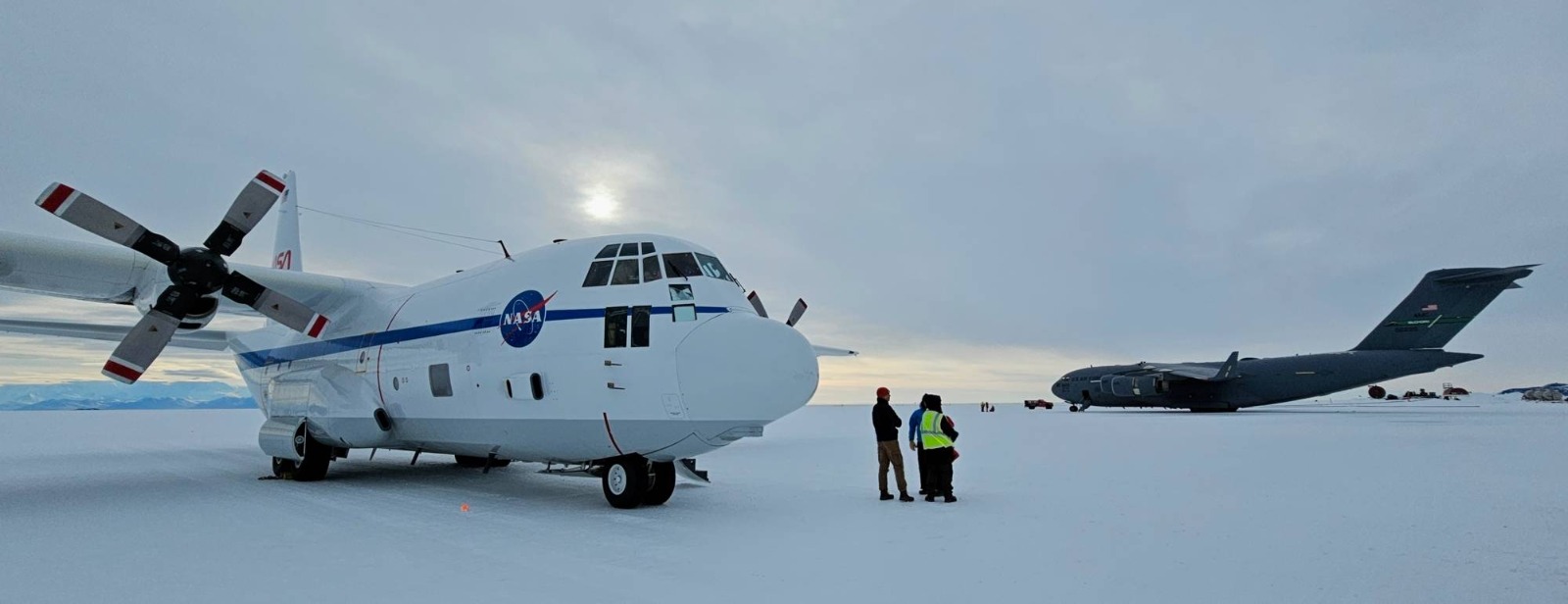In a significant achievement, NASA’s C-130 Hercules aircraft successfully carried out its first-ever flight to Antarctica on October 28, as it safely transported the Galactic/Extragalactic ULDB Spectroscopic Terahertz Observatory (GUSTO) to the McMurdo Station.
The National Science Foundation-managed United States research station is the base for NASA’s Antarctic long-duration balloon campaign, slated to commence in December 2023. It is from this station that the GUSTO mission will embark on its scientific balloon flight.
In a recent press release, NASA disclosed that the C-130 crew, having already completed half of their extensive 26,400-nautical-mile round-trip journey, embarked on their journey from Fort Cavazos, Texas, on October 17.
Their primary task during this stop was to load the GUSTO observatory along with the members of its instrument team. Subsequent visits for aircraft maintenance and crew rest took place at Travis Air Force Base (AFB), California; Hickman AFB, Hawaii; Pago Pago, American Samoa; and Christchurch, New Zealand.
This extensive journey ultimately concluded with their arrival at McMurdo, Antarctica, just 800 miles from the South Pole, as stated by the US Space Agency.
Welcome to Antarctica, GUSTO! 👋
Our C-130 aircraft took its first-ever flight to Antarctica to deliver the observatory last weekend. GUSTO will fly on a scientific balloon this winter to map a portion of the Milky Way galaxy and Large Magellanic Cloud. https://t.co/naGes5Vx08 pic.twitter.com/5PBEAc4ceR
— NASA Wallops (@NASAWallops) October 30, 2023
GUSTO, a vital part of NASA’s Astrophysics Explorers Program, is preparing to soar aloft aboard a scientific balloon of colossal proportions, akin to the size of a football stadium, for an extended mission lasting 55 days and beyond.
This mission is focused on mapping a segment of the Milky Way Galaxy and the nearby Large Magellanic Cloud.
Equipped with a telescope featuring detectors for carbon, oxygen, and nitrogen emission lines, GUSTO is geared towards the measurement of the interstellar medium. This material fills the cosmic expanse between stars. Its objective is to trace the complete life cycle of this interstellar matter.
GUSTO’s scientific observations will be conducted through a balloon launch from Antarctica, a location chosen for the ample observation time, proximity to celestial objects, and the benefit of solar power during the austral summer in the polar region.

As detailed on the NASA website, “The combination of data will provide the spectral and spatial resolution information needed for NASA to untangle the complexities of the interstellar medium, and map out large sections of the plane of our Milky Way galaxy and the nearby galaxy known as the Large Magellanic Cloud.”
The GUSTO mission was first selected in 2014 due to a solicitation by NASA’s Astrophysics Explorers Program. This mission of opportunity proposal was subjected to a rigorous review process by a panel comprising NASA experts and other scientists and engineers.
Out of the initial eight proposals, two mission-of-opportunity concept studies were selected. Subsequently, NASA determined that the GUSTO mission has the most promising potential for delivering excellent scientific results, and it also presented a practical development plan.
How NASA’s C-130 Aircraft Prepared For Its First-Ever Flight To Antarctica?
The NASA C-130, managed by the Wallops Flight Facility Aircraft Office in Wallops Island, Virginia, underwent nearly a year of meticulous preparations for the monumental GUSTO mission to Antarctica.
These preparations involved various tasks, including securing international clearances with relevant agencies, configuring cargo arrangements with NASA’s Balloon Program Office, and coordinating logistical support with the National Science Foundation at McMurdo.
Additionally, the Aircraft Office conducted specialized training to navigate the unique challenges of Antarctica, all in pursuit of ensuring the safe delivery of GUSTO’s complex scientific payload.
This landmark voyage marked the first-ever mission to Antarctica for the NASA C-130 aircraft, presenting a series of formidable challenges associated with long-haul cargo flights.
To address these complexities, mission managers, in collaboration with NASA’s Office of International and Interagency Relations (OIIR), started proactive efforts to obtain international flight clearances.

John Baycura, Wallops research pilot on the GUSTO mission, said, “We work very hard to make sure that we execute the mission at a high standard of technical competence and professionalism to maintain NASA’s international reputation.”
The extensive shifts in time zones posed a significant hurdle to the crew’s circadian rhythms. To manage the demanding journey spanning 90 hours across multiple time zones, an additional pilot and flight engineer were enlisted to share the workload.
Complying with NASA policy, planned crew rest days were incorporated to ensure the crew had adequate time to rest, acclimate to the rigorous schedule, and maintain safety standards.
The primary challenge for flights of this kind is unpredictable weather, especially during oceanic crossings where radar coverage is lacking.
As a result, the flight crew relied on the Department of Defense (DOD) and civilian weather agencies to detect adverse weather patterns, allowing them to adjust their flight paths, altitudes, and timing as necessary.
The US Space Agency also noted that this mission received no assistance from commercial entities for its final leg to Antarctica. The US Air Force’s C-17s and the New York Air National Guard’s LC-130s, typically responsible for McMurdo Station transport, faced scheduling constraints.
Hence, the decision to employ NASA’s C-130 for this specialized cargo mission proved highly advantageous. John Baycura said that this provided the balloon program with an exclusive asset manned by a seasoned crew and support team, leading to a significant reduction in the usual project risks related to scheduling, cargo delivery, and overall costs.
- Contact the author at ashishmichel(at)gmail.com
- Follow EurAsian Times on Google News




